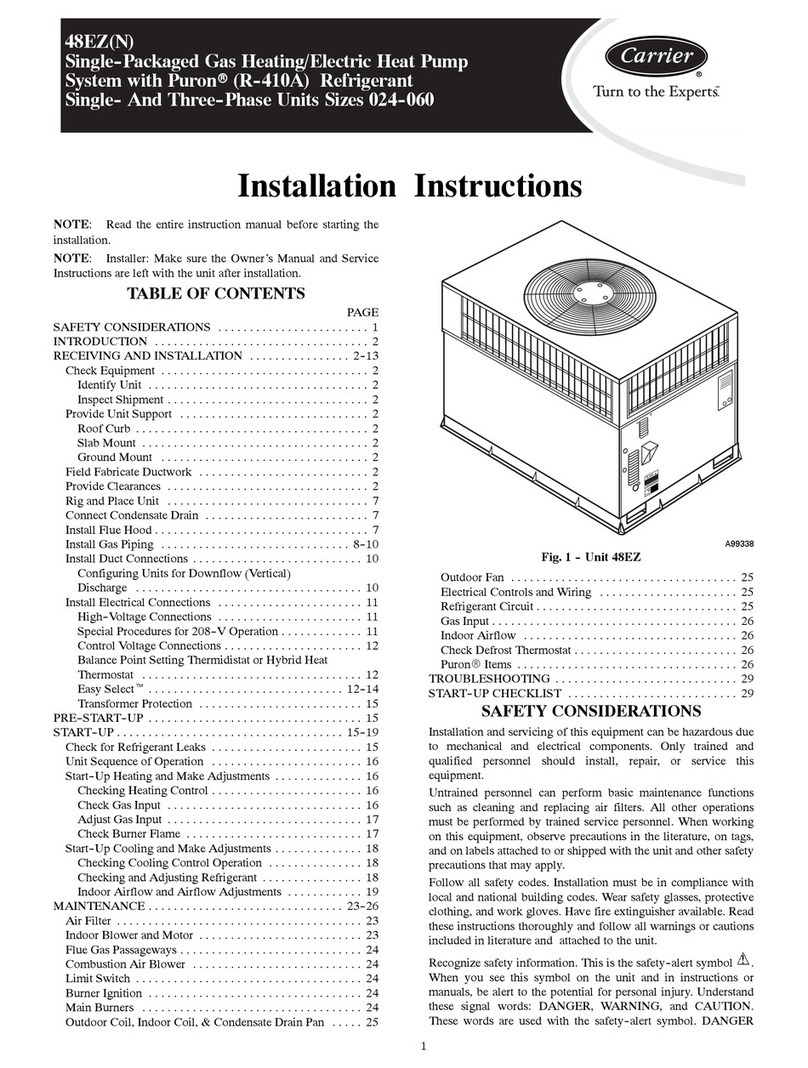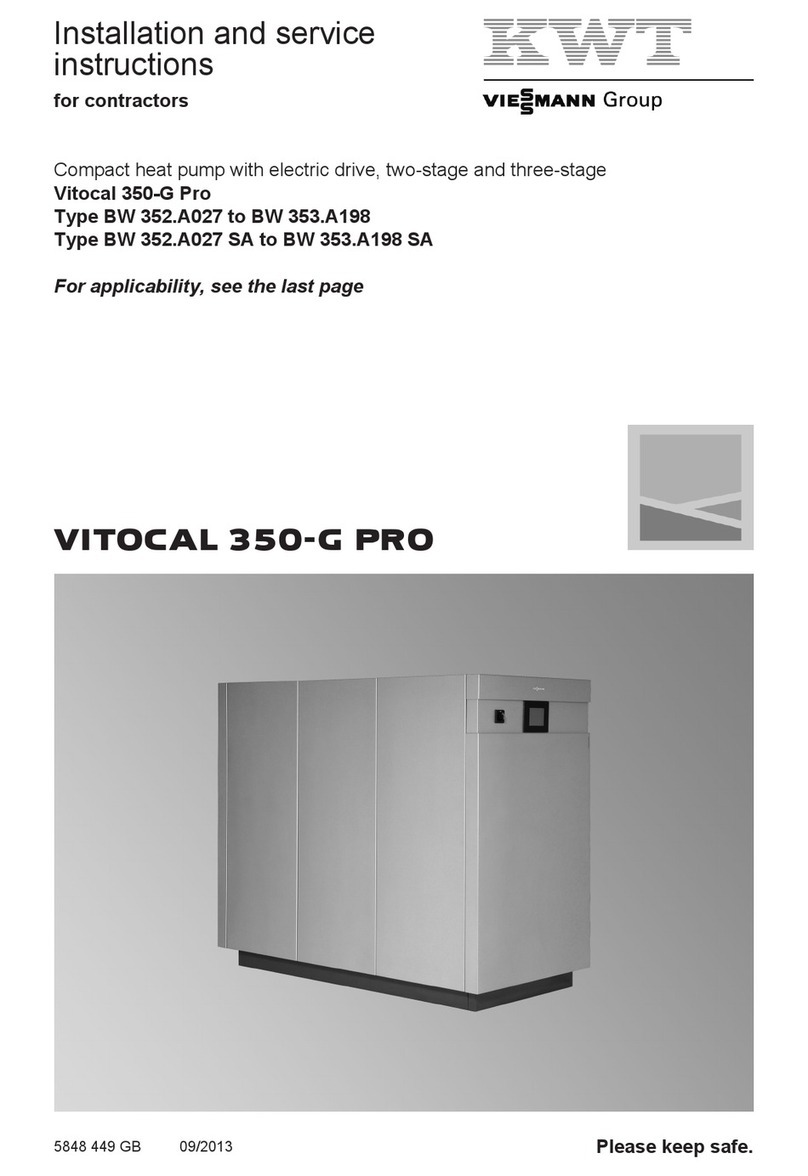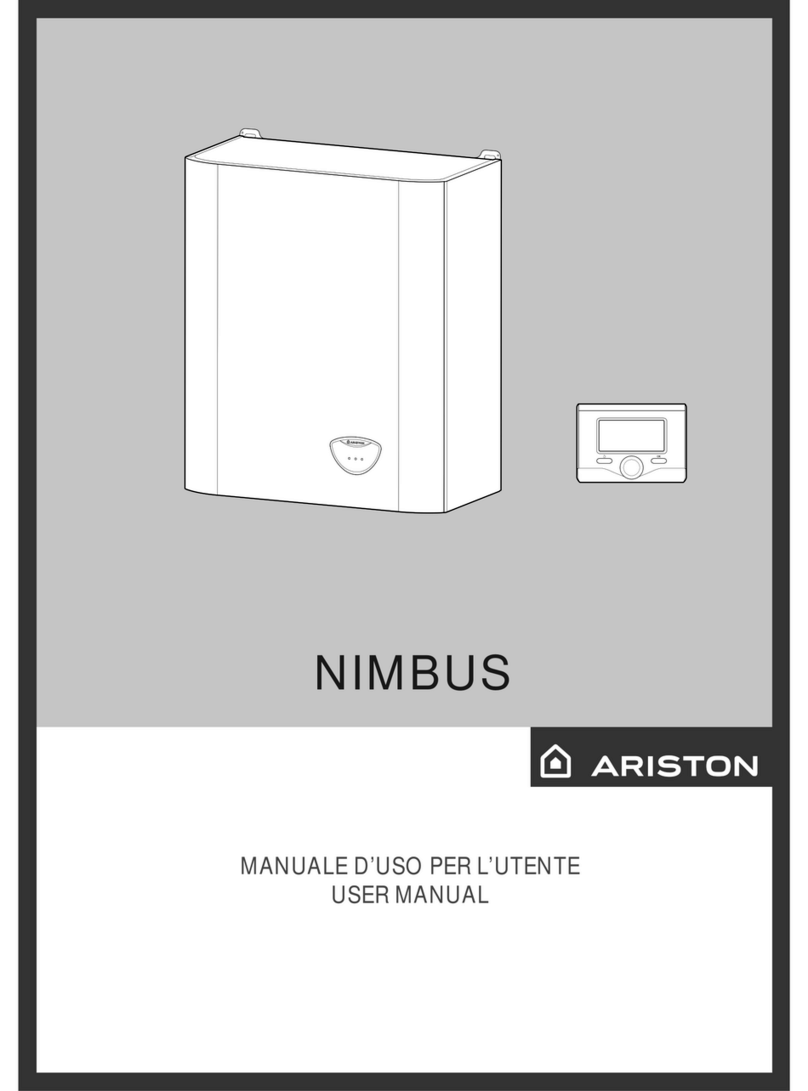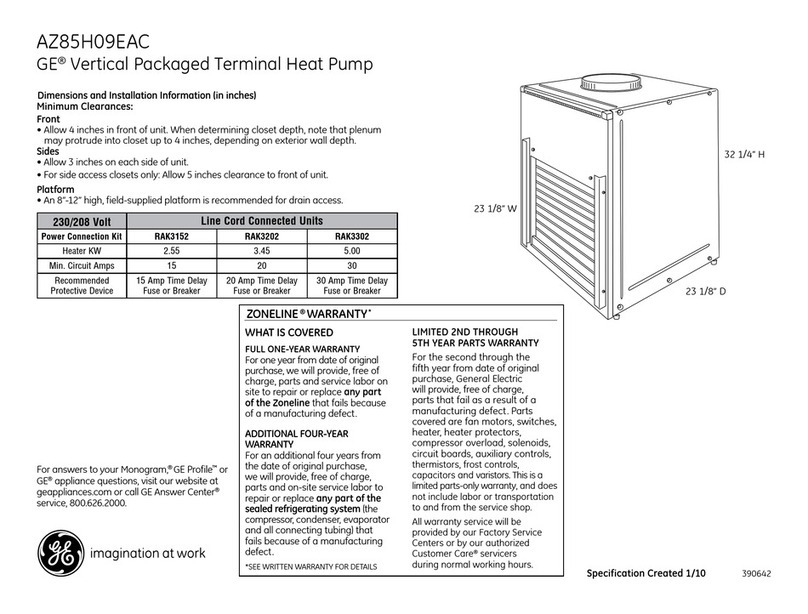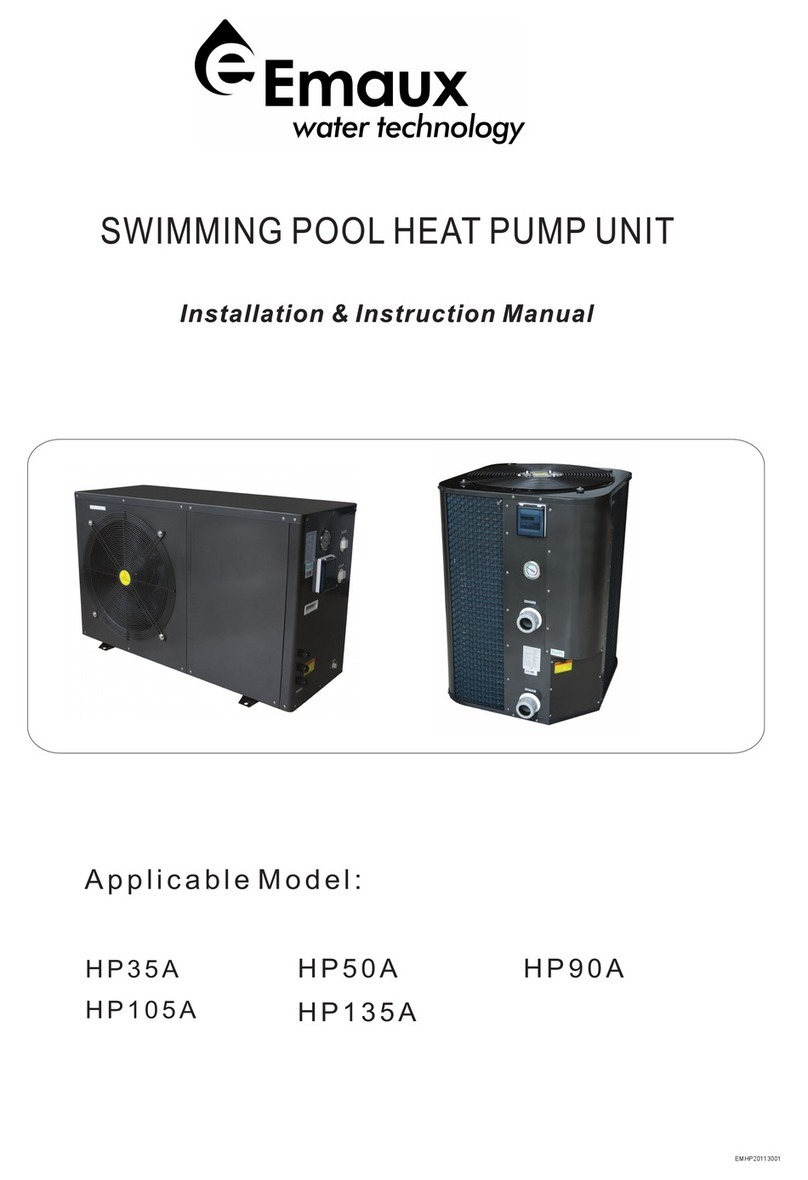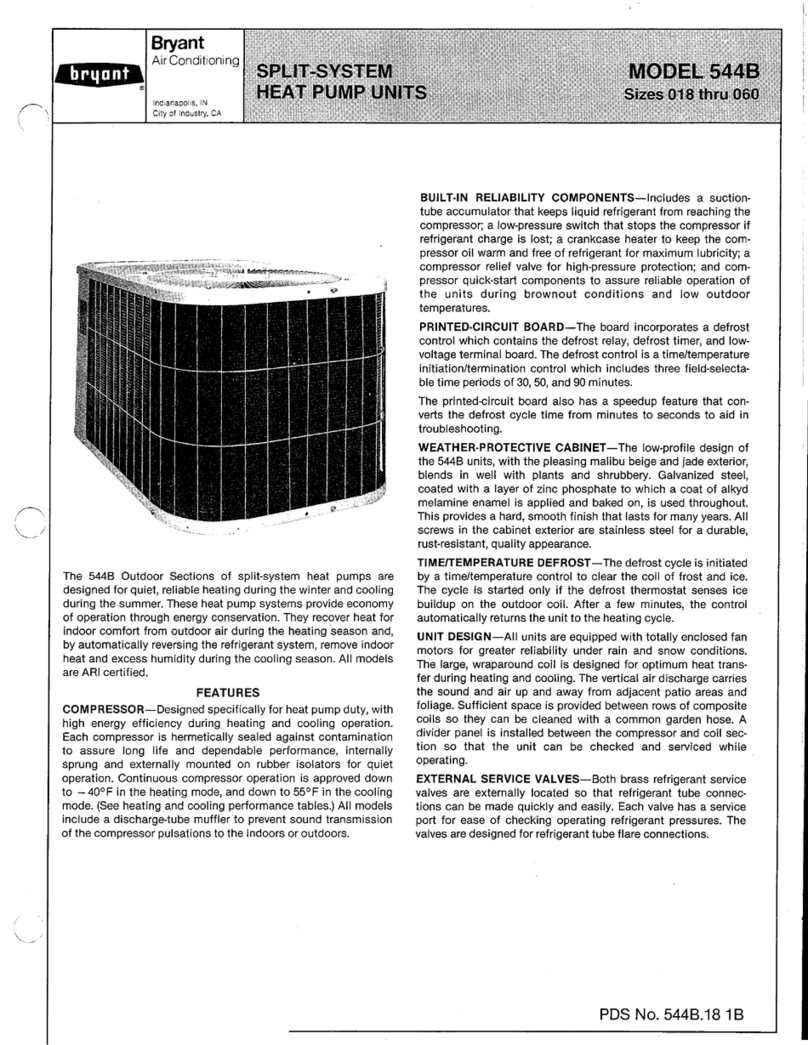
P5 PROHIBITION PROHIBITION P6
Do not connect the power cord to an intermediate point, use an extension
cord, or connect multiple devices to heat pump.
- This may cause overheating, fire or electric shock.
Make sure the power plug is free of dirt and insert it securely into the outlet.
- A dirty plug may cause fire or electric shock.
Do not bundle, pull, damage, or modify the power cord, and do not apply
heat or place heavy objects on it.
- This may cause fire or electric shock.
Do not turn the breaker OFF/ON or disconnect/connect the power plug
during operation.
- This may create sparks, which can cause fire.
Do not expose your body directly to cool air for a prolonged length of time.
- This could be detrimental to your health.
The unit should not be installed, relocated, disassembled, altered,
or repaired by the user.
- An improperly handled heat pump may cause fire, electric shock,
injury, or water
leakage, etc. Consult your dealer.
- If the power supply cord is damaged, it must be replaced by the
manufacturer or its service agent in order to avoid a hazard.
When installing, relocating, or servicing the unit, make sure that no substance other
than the specified refrigerant (R32) enters the refrigerant circuit.
- Any presence of foreign substance such as air can cause abnormal
pressure rise and may result in explosion or injur y.
- The use of any refrigerant other than that specified for the system will cause
mechanical failure, system malfunction, or unit breakdown.
In the worst case, this could lead to a serious impediment to securing product safety.
This appliance is not intended for use by persons (including children) with reduced
physical, sensory or mental capabilities, or lack of experience and knowledge, unless
they have been given supervision or instruction concerning use of the appliance
by a person responsible for their safety.
Children should be supervised to ensure that they do not play with the appliance.
The appliance shall be stored in a room without continuously operating ignition
sources (for example: open flames, an operating gas appliance or an operating
electric heater).
Do not insert your finger, a stick, or other objects into the air inlet or outlet.
- This may cause injury, since the fan inside rotates at high speeds during
operation.
In case of an abnormal condition (such as a burning smell),
stop the heat pump and disconnect the power plug or turn the breaker OFF.
- A continued operation in the abnormal state may cause a malfunction, f
ire, or electric shock. In this case, consult your dealer.
When the heat pump does not cool or heat, there is a possibility of refrigerant
leakage. If any refrigerant leakage is found,
stop operations and ventilate the room well and consult your dealer
immediately. If a repair involves recharging the unit with refrigerant, ask the
service technician for details.
- The refrigerant used in the heat pump is not harmful. Normally,
it does not leak. However, if refrigerant leaks and comes in contact with fire or
heating part of such a fan heater, kerosene heater, or cooking stove, it will create
harmful gas and there is risk of fire.
The user should never attempt to wash the inside of the indoor
unit. Should the inside of the unit require cleaning, contact your dealer.
- Unsuitable detergent may cause damage to plastic material inside the unit,
which may result in water leakage. Should detergent come in contact with
electrical parts or the motor, it will result in a malfunction, smoke, or fire.
- The appliance shall be stored in a room without continuously operating
ignition sources (for example: open flames, an operating gas appliance or an
operating electric heater).
- Be aware that refrigerants may not contain an odor.
- Do not use means to accelerate the defrosting process or to clean the
appliance, other than those recommended by the manufacturer.
- Do not pierce or burn.
This unit should be installed outdoor or in rooms which exceed the
floor space specified below. GL50: 2.2 m2 or larger
GL60: 2.3 m2 or larger
GL71180: 3.1 m2 or larger







